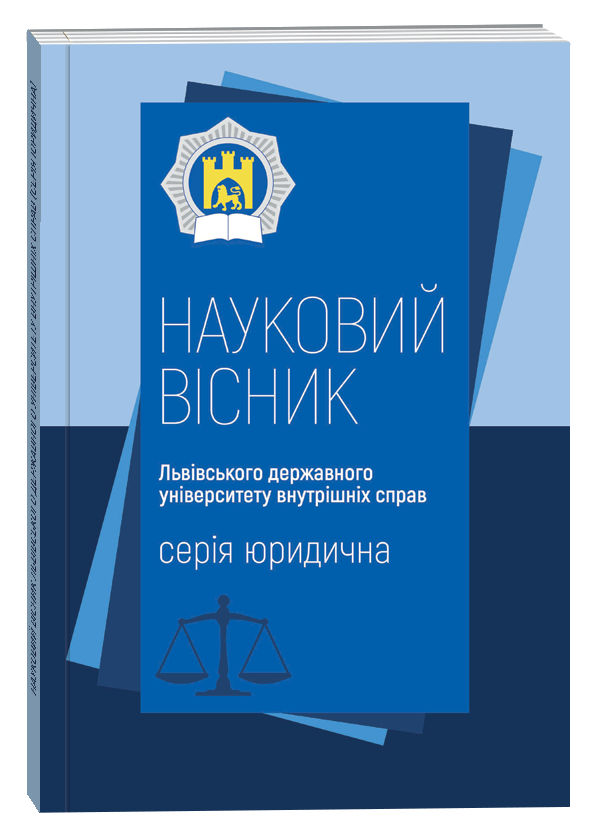DIGITALIZATION OF LABOR RELATIONS IN UKRAINE: SPECIFICITY OF EMPLOYMENT WITHIN THE DIGITAL ECONOMY
DOI:
https://doi.org/10.32782/2311-8040/2023-2-5Keywords:
right to work, population employment, digitalization, digital technologies, information space, cyber protection in the field of laborAbstract
The problems of digitalization of labor relations are considered. It is noted that digital technologies change the position of a person in the social structure and in the living space. In modern times, digitalization is one of the most important driving forces for the transformation of both the economy and society as a whole. Changes caused by new technical opportunities also affect the behavior of economic entities. As for subjects of labor law, digitalization is manifested in models of administrative and organizational activity and the introduction of new forms of digital interaction. Such interaction includes changes in working time models, organization of human resources management, as well as the development of the employee’s workplace. The current combination of traditional and flexible work models is expected to be more actively developed in the digital context in the future towards greater adaptability to labor market transformations. It has been studied that digitalization helps to differentiate relations by distributing consumption and production. Mechanization and automation freed people from hard work, digital technologies automate routine operations and require new regulatory approaches. The digital infrastructure allows solving the problems of increasing the efficiency of the organization of labor activities due to the transparency of remuneration, the correspondence of abilities and interests to the performed functions, control and assessment of quality from the point of view of the consumer on the basis of a proactive information and digital space for the purpose of effective use of labor. Digitization is related to the labor market in the context of digital processes regarding the acceleration of work and mobility of flexible forms of work and can be characterized by such dimensions as working hours, forms of work, labor management, work space, etc. At the same time, digital technologies pose new challenges, as the position of man next to the machine changes, the role of man in the creative transformation of the labor market and new forms of relationships between people in production. The guaranteed satisfaction of basic human needs leads to new forms of interest and involvement in work, which raises questions about the value-content principles of the process of digitalization of work.
References
Internet usage statistics. Internet World Stat. 2021. URL: https://www.internetworldstats.com/stats.htm (viewed on 09.12.2022).
В Україні з’явиться Президентський університет. Навчання почнеться у 2023 році. Офіц. вебсайт Міністерства цифрової трансформації. 2021. 31 трав. URL: https://thedigital.gov.ua/news/v-ukrainizyavitsya-prezidentskiy-universitet-navchannya-pochnetsya-u-2023-rotsi (дата звернення: 09.12.2022).
Україна 2030Е – країна з розвиненою цифровою економікою. 2021. URL: https://strategy.uifuture.org/kraina-z-rozvinutoyu-cifrovoyu-ekonomikoyu.html (дата звернення: 09.12.2022).
Саме цифровізація дозволяє забезпечити швидку, якісну та ефективну дерегуляцію трудових відносин. Офіц. вебсайт Міністерства економіки України. 2021. 21 черв. URL: https://www.kmu.gov.ua/news/same-cifrovizaciya-dozvolyaye-zabezpechiti-shvidku-yakisnu-ta-efektivnu-deregulyaciyu-trudovihvidnosin-igor-dyadyura (дата звернення: 09.12.2022).
Адаменко М. Цифровізація. Термінологія. Блог Національної бібліотеки України ім. Ярослава Мудрого. 2022. 22 лют. URL: https://oth.nlu.org.ua/?p=5614 (дата звернення: 09.12.2022).
Cambridge dictionary. URL: https://dictionary.cambridge.org (viewed on 09.12.2022).
Johnston Hannah, Land-Kazlauskas Chris. Organizing on-demand: Representation, voice, and collective bargaining in the gig economy. Geneva : ILO, 2019.
Міжнародно-правове та національне регулювання реалізації прав у сфері праці: теоретико-прикладні проблеми : колективна монографія / Н.П. Мокрицька, Р.Я. Бутинська та ін. ; за заг. ред. д. ю. н. М.С. Долинської. Львів : Галицька видавнича спілка, 2021. 312 с.
Україна приєдналася до програми «Цифрова Європа»: що це означає. Офіц. вебсайт Міністерcтва цифрової трансформації України. 2022. URL: https://www.kmu.gov.ua/news/ukraina-doluchylasia-doprohramy-tsyfrova-ievropa-shcho-tse-oznachaie (дата звернення: 09.12.2022).
Кодекс законів про працю України від 10.12.1971 № 322-VIII (в ред. від 27.01.2023). База даних «Законодавство України» / ВР України. URL: https://zakon.rada.gov.ua/laws/show/322-08#Text (дата звернення: 09.12.2022).
Коляденко С.В. Цифрова економіка: передумови та етапи становлення в Україні і у світі. Економіка. Фінанси. Менеджмент: актуальні питання науки і практики. 2016. № 5. С. 105–112.
Цифрова економіка : підручник / Т.І. Олешко, Н.В. Касьянова, С.Ф. Смерічевський та ін. Київ : НАУ, 2022.
De Stefano V. The rise of the ‘just-in-time workforce’: On-demand work, crowd work and labour protection in the ‘gig-economy’. Comparative Labor law and Policy Journal. 2015. No. 37(3). P. 471–503. http://dx.doi.org/10.2139/ssrn.2682602.
Погорєлова О.С. Напрями реформування трудового законодавства в умовах поширення цифрової роботи. Право та державне управління. 2020. № 4. С. 43–50.
Гавловський В.Д. Комплексне використання сучасних методів психодіагностики для відбору кандидатів на службу. Використання поліграфа в правоохоронній діяльності: проблеми та перспективи: матер, ІІІ Міжнар. наук.-практ. конф. (м. Київ, 7–8 листоп. 2015 р.). Київ : Нац. акад. внутр. справ, 2015. С. 169–172.
Назарова Г.В. Трансформація соціально-трудових відносин в умовах цифрової економіки. Сфера зайнятості і доходів в умовах цифрової економіки: механізми регулювання, виклики та домінанти розвитку: зб. тез доп. учасн. Міжнар. наук.-практ. конф. (м. Київ, 23–24 жовт. 2019 р.). Київ, 2019. С. 29–31.
Хандій О.О. Державна підтримка трансформації трудових відносин в ІТ-сфері в умовах цифровізації економіки. Економіка промисловості. 2019. № 2(86). С. 126–145.









